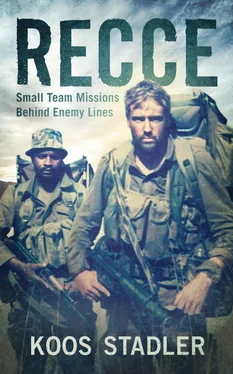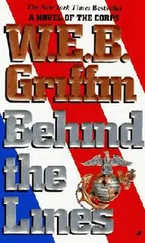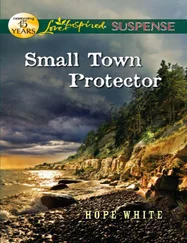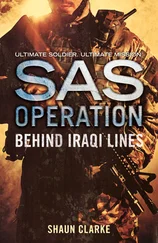Yet I decided not to retaliate, since our 60-mm patrol mortar did not have the range of their 82s. Besides, we had only a limited number of bombs and I did not want to give our position away. We knew from experience that the tree branches overhead would trigger some airbursts, and we could only pray that the bombardment would not come closer. We were not dug in, since we would be on the move before first light (although once we heard the first mortar leave the tube we dug frantically into the soft sand).
In the end, the 82-mm bombs did not find their target, but it was still an unnerving experience. I had been in many contacts with the enemy, and had been at the receiving end of much more accurate mortar and artillery fire, and later even fighter aircraft attack, but the uncertainty of that night remains vivid in my mind.
Before first light we were on the move and soon found the enemy’s deserted positions – 60 well-prepared dugouts in an L-shaped ambush formation, complete with mortar pit at the junction of the lines. As we inspected the surprise SWAPO had prepared for us, we could only thank our lucky stars that we hadn’t charged in there blindly. The detachment had been ready for us, and, had we followed the tracks of the three SWAPO cadres further the night before, we would have walked straight into their ambush. That day we followed the tracks for ten kilometres north, but had to abandon the effort when we reached our boundary, as the spoor led into 32 Battalion’s area of responsibility.
When I reported this, the Tac HQ ordered us to move to a safe area and secure a landing zone for a resupply. I found it strange, since I had not requested a resupply, and we did not really want our position to be compromised. But we went ahead and secured an area. At 17:00 that afternoon a Puma from Eenhana dropped off, for each of us, a warm chicken wrapped in tin foil, an ice-cold Coke and a carton of long-life milk.
It was 26 December 1980, and that resupply was a wonderful Christmas gift. We had our feast in a last halt, well spread out, with buddies covering each other. At last light we shifted our position into a hide. Under a brilliant starlit sky, I thought of my family, who would be together and the night before would have shared gifts and rejoiced in the message of Christmas.
That night, despite the pent-up fear and the uncertainty about what the next day would bring, I developed a personal philosophy that would become a yardstick for as long as I did clandestine deployments into countries harbouring hostile forces. In my mind’s eye I would step out of my body, look down at myself lying under the stars in that foreign land and ask myself one question, “Where would you rather be at this moment?” If the honest answer was, “Nowhere. This is where I want to be”, I would find peace in spite of my fear and uncertainty, as I knew that everything was exactly as it was supposed to be. I had made the decision to be there, and I was prepared to take full responsibility for it.
This was often easier said than done, but this philosophy guided and remained true for me for as long as I did special operations. In later years with Special Forces I went through periods of constant and extreme pressure. During those times I would relive all the old fears – and even had flashbacks of close encounters during my time with 31 Battalion recce wing. But the essence of the philosophy has carried me through many challenging situations, not only during special operations but also in a later phase in my life when I participated in extreme adventure sports events, and ultimately during a 200-km solo hike through one of the most barren sand deserts on earth, the Rub’ al-Khali, or Empty Quarter, in Saudi Arabia.
That night I fell asleep with a full tummy and happy memories of my loved ones, knowing that I would face the challenges of the new day refreshed in body and spirit.
In 1981 SWAPO’s Western Front launched a number of infiltrations from its headquarters in the vicinity of Cahama across the border into the Kaokoland, the barren semidesert bordering the Namib. The recce wing of 31 Battalion was tasked with a series of operations into Angola along both sides of the Cunene River. The purpose was to find SWAPO forward deployments that would serve as staging points for the groups infiltrating deep into South West Africa.
These operations, staged from Ruacana, differed in many ways from my experience up to that point. For starters, the area was covered in mopane trees and the ground was hard, unlike the thick sand that covered the whole of Ovamboland to the east and the central parts of southern Angola. Undergrowth was relatively sparse, which meant that we rarely found a good hide, and would therefore never outstay our welcome. Another difference was the rugged mountainous terrain to the west of the Ruacana Falls. This was a world apart from the tree savanna of Ovamboland.
Not unlike the Tac HQ we used to establish at Katima Mulilo, we had a cosy little ops and radio room in a bunker that served as operational headquarters at Ruacana. Initially our deployments were tentative, as we had to get to know the area and, more importantly, convince the Sector 20 bosses at Oshakati that we were up to the job. Therefore our early deployments were all on the “safe” side of the Cunene River, mostly shallow incursions to determine if SWAPO had been bold enough to cross over to establish forward bases or penetrate deeper into South West Africa.
At that point the strategic position of the SADF was somewhat restricted, since Pretoria’s official position was that no South African troops were deployed in Angola. The capture of a South African soldier on the wrong side of the border would therefore have been a grand prize for the Angolans. At the same time, Pretoria was struggling to convince a sceptical world that ours was a just cause, and trying to obtain proof that the MPLA was supporting SWAPO. As always, politics prescribed the war effort.
To reduce the risk of South African troops being captured, South West Africa Territorial Command issued an order that South African regular forces were not allowed to deploy in any subunit smaller than a section, or ten men. This rule was also to be applied by all the units permanently based in the operational area, including 31 and 32 battalions.
I thought the order had to be a joke. A section of ten guys would be extremely exposed, especially if they were not trained in the finer arts of minor tactics. They would leave a track as clear as a highway, make unnecessary noise, and would still not have the firepower to fend off a large enemy force.
After discussing the issue with my superiors, both at Sector 10 and at 31 Battalion, we came up with a compromise: all reconnaissance missions would henceforth be done in ten-man sections, combining two five-man recce groups into a section-strong team – but each under its own team leader. Usually a ten-man section would be deployed under the command of one Tac HQ. However, we decided that the two five-man teams would operate separately and each in its own area of responsibility, but within so-called support distance of each other. This solution appeased everyone, and we managed to stretch the “support distance” somewhat.
During the time we were operating from Ruacana I was out of action for several weeks after I contracted malaria. One day, while doing PT with the ops personnel from the base, I suddenly started to feel very ill. Afterwards I had a vicious headache and started vomiting uncontrollably.
The malaria took me down. While lying in the cramped, hot sickbay at Hurricane, the airport and gunners’ base outside Ruacana, I lost consciousness as the fever took my mind to terrible places. I was overcome by strange hallucinations of hordes of SWAPO fighters falling from trees onto my secret hideout. The next moment I would be back in green pastures along the Orange River with my family. I remember how, at some point between these bouts of fever, my comrades came in to greet me, and I realised with a shock that they were saying their goodbyes. But slowly I emerged from this ordeal, and steadily regained my sanity over a three- or four-day period.
Читать дальше












